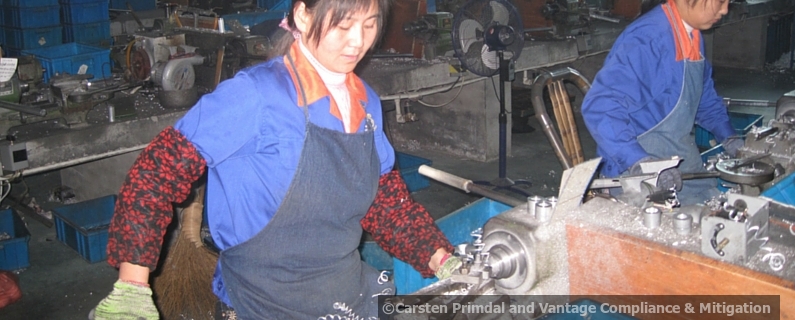As another manufacturing calendar year approaches, this year’s Q4 is a good time to evaluate the state of the manufacturing world, where your enterprise stands within it, and how changes within the industrial sector have impacted your corporate activities. The past decade has been remarkable because of the occurrences of the global recession, the rise of the Chinese middle class, and the explosion of digital technology. Each “occurrence” has altered how the world does business (although actually they are processes and their impacts are ongoing). Understanding how these occurrences permanently changed the global industrial sector will help you strategize your 2016 supply chain planning processes, so you can capture all the potential growth available, as well as avoid painful and costly losses.
China’s Internal Economic Challenges Impact International Producers:
The 2008 global recession wasn’t as significant within China’s economy as it was to the rest of the world. Within China, the manufacturing sector chugged along (although at a slower pace), even while international producers were negatively constrained by unstable financial markets and accelerating international debt. For some international manufacturers, the force of the Chinese manufacturing engine was sufficient to support their endeavours while they experienced losses in other aspects of their offshore production systems.
The biggest factor that did cause China to suffer was the internal response to its own manufacturing sector success. The Chinese people responded very favorably to their rising standard of living and began demanding higher wages and safer working conditions. The consequential impact on China’s internal economy has been to slow it down considerably from its astonishing (but clearly unsustainable) pace of the past ten years. The impact on Chinese production networks that supply international commerce has been a challenge, as costs have risen, and materials and product qualities have fallen.
Digital Resources Shine New Light on Enterprise Realities:
At the same time, the evolution of “Big Data” and enterprise analytics have created entirely new methods of tracking and evaluating manufacturing processes. In the past, ordering was often based on the review of past supply/demand ratios, and materials and manufacturing suppliers were directed to increase or decrease production accordingly. The shifting economic situation, however, renders that “past-orders-history” data obsolete because it relies on out-dated information that was collected in another economic era.
To be truly attuned to the shifting flow of supply and demand factors, today’s manufacturers should be planning to use technology to observe rises and falls in demand almost on a day-to-day basis. By doing so, they can quickly gauge a drop in demand and order an equally quick reduction in production. For this to be successful, however, each manufacturer must be intimately familiar with the processes and systems involved all along their supply chains and throughout all their supplier networks. Not understanding how those individual factories or suppliers are interacting within the entire supply chain structure can cause delays in production and reductions in quality. Worse, over-production of unsaleable goods creates waste of resources all through the production process.
Your Current Supply Chains Need Review to Stay Competitive:
The current economic factors and their impact on current and future manufacturing strategies should be analyzed now, to inform planning for the 2016 manufacturing year. You need to know that your supply chains continue to align with your corporate marketing and production strategies and that your operations department is making the best use possible of your existing supply chain producers.
Your organization needs flexible and responsive supply chains to compete in the new global industrial environment. Contact me today to discuss how I can help you gather relevant, current data about your suppliers, and investigate options to enhance your technological and other manufacturing systems.
To better understand how you can validate your suppliers you can also download a free checklist “New Supplier OnBoarding Checklist” here.
https://vantagecompliance.com/buying-from-china-bg/
These checkpoints are not only for new suppliers, in fact they should be checked and verified regularly for all suppliers.This blog was written by Carsten Primdal, an independent consultant who helps businesses that have manufacturing done overseas – especially in China – minimize supply chain risk.Drawing on years of on-the-ground experience and a strong understanding of the cultural and commercial context, Carsten is passionate about helping his clients gain greater control over the risks most companies face knowingly or unknowingly.
Urgent issues? Questions? Concerns? If you are considering/already buying from Chinese factories and would like more information, please feel free to contact us for an obligation free talk.
I can be reached at carsten@vantagecompliance.com or on (+61) 413 089 020
You may also like to read some of my other blogs. They can be found here:
Communication and Relationships Smooth the Process of Importing From China
Protect Your Manufacturing Outcomes By Avoiding Product Delays and Failures
Reputable Chinese Suppliers Maintain China’s Industrial Reputation
China’s Economic Overhaul Will Improve Global Supply Chains
Manufacturing Compromises Can Ruin Your Brand
Tenacity and Communications Reduce Risk of Chinese Child Labour Law Violations
Safety Study Identifies Chinese Supply Factory Risks
China Manufacturing Industry Challenges Trigger Inspections, Consequences
Risk Mitigation Can Prevent Chinese Supply Chain Disruption
Tips and Traps of Contracting in China
Keeping Your Supply Chain Green: Avoiding the Environmental Polluters when sourcing in China
Ensure Timely Contract Compliance with a Chinese Supply Chain Expert
Two Key Questions To Answer Before Onboarding Your Chinese Manufacturing Supplier
Off-Shore Manufacturer’s Certificates Require Credibility
Factory Planning Principles Improve Supply Chain Quality
Mitigating Risk of Quality Fade in Overseas Manufacturing Facilities
How to Assure your “Green” Supply Chain in China
ChAFTA Opens Doors for increase in China-Australia Business relations
China Verification for Your Manufacturing Supplier Needs
Australian Industry Agreements Encourage More Chinese Factory Verifications
China Factory Verification: Check Before You Buy
Frozen berry recall highlights potential supply chain risks in offshore production



